Some people are more scared to see animals in a black hue. Hence, this is connected to the concern of some people about black snakes slithering near their residences. Seeing one in front of you may cause panic.
Is it just right to be scared? What will happen when a person is bitten by a black snake?
Are black snakes poisonous? Although black snakes can bite in defense, they’re not poisonous. Moreover, the bite from these snakes is not fatal, but it can hurt a good deal. Black snakes can be scary as they’re large species, but they don’t deliver poison or venom.
It doesn’t mean that the bite from a black snake only causes pain. The site is filled with bacteria that can lead to infection.
Getting bitten by a large snake that can grow seven or eight feet long is not a pleasant experience at all. Learn facts about this snake in this article to let go of misinformation.
Related: How to Get Rid of Black Rat Snakes? | Effective, Safe, and Humane Solutions
Are Black Snakes Harmful?
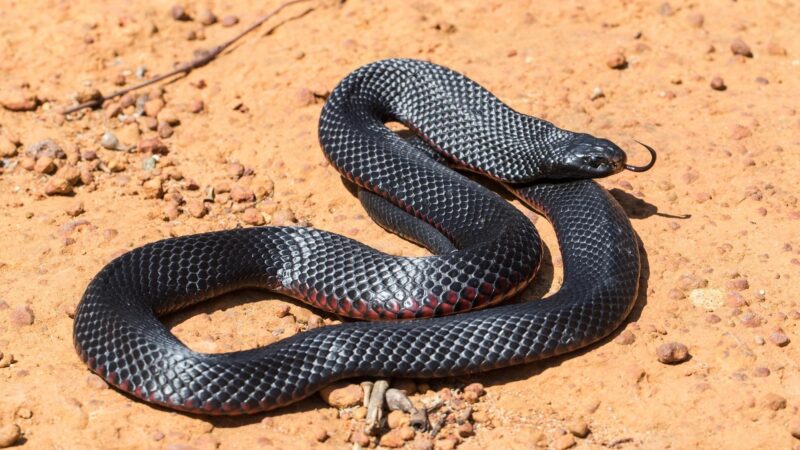
Black snakes are shy, calm, and docile. That’s why they’re one of the snake species that people get as pets. When you come across a black snake in the wild, give it enough space to let it remain motionless on the ground. In most cases, they don’t move when they sense a threat.
However, black snakes can act differently when they feel threatened. Although humans are not included in their diet, they can do some unfavorable things.
Once it feels discomfort, it bends or coils in unusual, acute angles. Also, black snakes eject foul smells when touched or picked up by their predator. This bad smell comes out of their tail.
Black snakes are distinguished as relatively harmless compared to other snake species due to their lack of fangs. It’s the reason why they don’t inflict venom or some kind of poison. Still, they can bite with their razor-sharp teeth.
Note that they have curved teeth, which promote a great impact on their bite. These snakes don’t go out just to bite humans. It can only happen if they’re provoked.
What Attracts Black Snakes to Your House?
Robert Pierce II, a wildlife state specialist from the University of Missouri, said that snake eggs found around or inside a house are from harmless species. This fact applies to the non-venomous black snakes. So, nesting and giving birth to their young is one of the reasons why they take shelter in your house.
They’re attracted to your house to find warmth for winter. It will usually happen in the fall. They also do it to hunt for food. Black snakes are after bird eggs, voles, rats, and mice. Some of these small critters may also live in your house, and the snakes follow them.
What Kind of Snake Is Black?
Here’s the list of large black snakes under the Colubridae family, which are mostly non-venomous. They are called rear-fanged because of their teeth which are elongated and grooved. These teeth are behind their upper jaws, and they’re proof that these snakes are not poisonous nor venomous.
Related: How to Get Rid of Timber Rattlesnakes | Effective Methods to Ensure Safety
Rat Snake
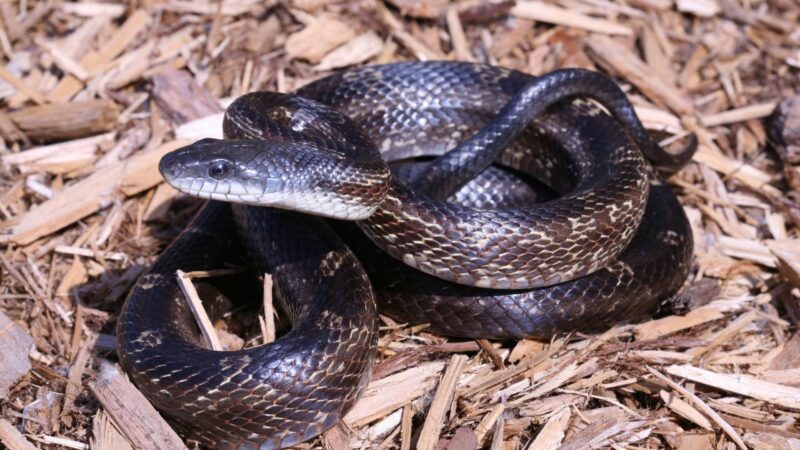
While the back of this snake is black, there are white markings on its belly and chin. It can be enormous as it grows more than 6 feet. They reach their massive size by feeding on rodents and birds. These snakes display great abilities as climbers when occupying agricultural fields and pine forests.
Indigo Snake
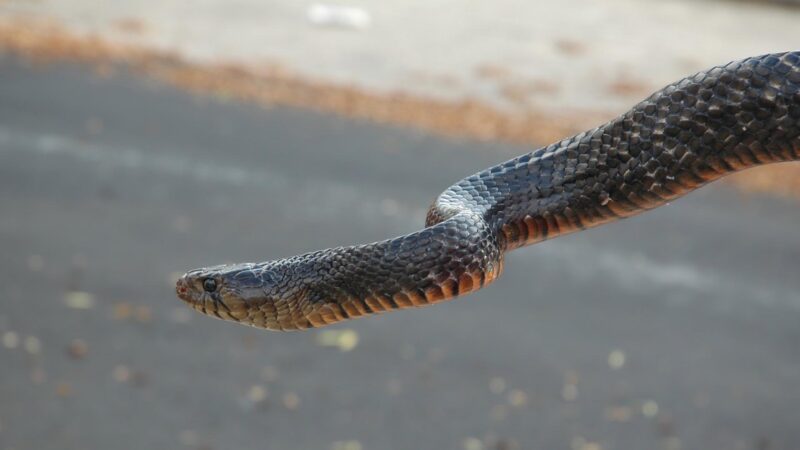
A thick black snake has a thick body that can grow up to more than eight feet. Thus, it’s recognized as the largest native snake species in North America. It has a glossy appearance with a bluish-black hue and smooth scales.
The belly is also black, but the throat and chin range from orange or deep maroon to light cream
Indigo snakes are found in hardwood hammocks, pine forests, and uplands. They prey on frogs, turtles, rodents, as well as venomous snakes namely rattlesnakes, copperheads, and cottonmouths.
Mudsnake
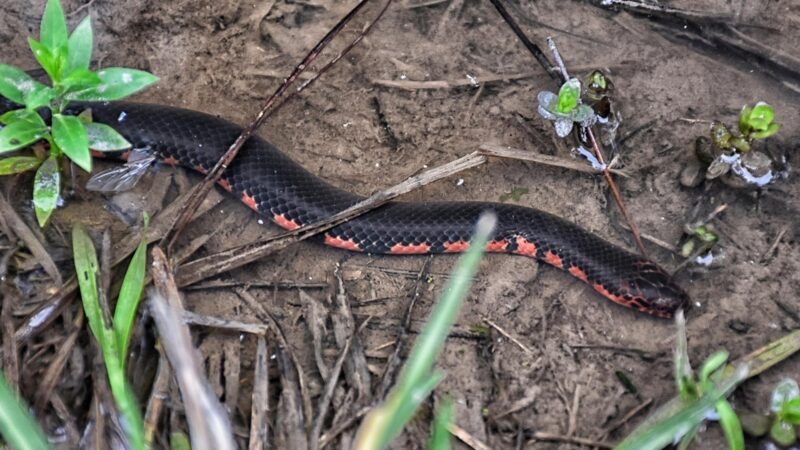
The black, thick body of this snake is covered by glossy scales. Its belly is with a checkerboard pattern of black and reddish pink. Moreover, this snake can grow up to 6.5 feet. Despite its large size, it’s docile, and it doesn’t intend to attack humans.
As its name suggests, this is an aquatic snake, so you’ll likely find them in swamps, rivers, and lakes. Based on its habitat, it consumes large salamanders.
Pine Snake
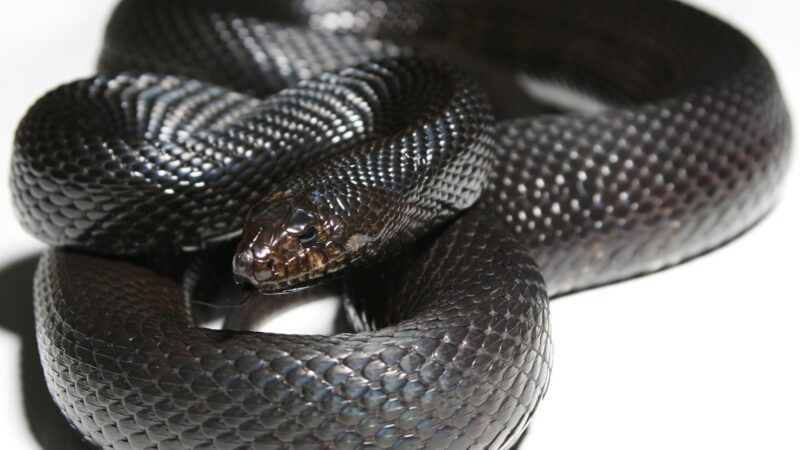
Keeled scales are constant features of pine snakes. They’re always black too, but some have dark brown color on their bellies and backs. Another distinct feature of these snakes is the cone-shaped scale on their snout’s tip.
They’re burrowers that grow up to six feet. Their diet can be composed of mammals and birds. These snakes like to be in pinelands with sandy soil. They hiss and coil when feeling threatened.
Black Racer
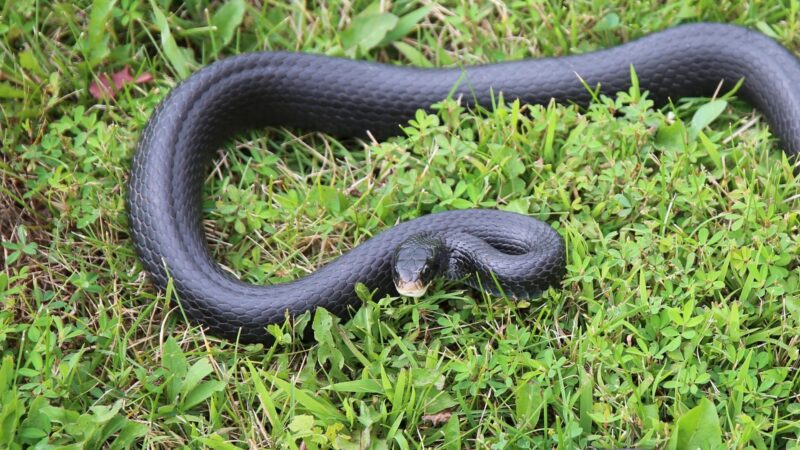
Also called the North American racer because it’s a native black snake in the southeastern part of the US. While it has smooth black scales, its belly varies from dark gray to jet black. The throat and chin are white or other lighter colors.
You’ll usually find black racer snakes that are four feet long, but some can grow longer than six feet. They’re long and slender, characteristics that let them swiftly grip their prey like rats, mice, and lizards.
Their habitat preference varies from pine forest or wetland. They also use their agility to escape humans, but they can still bite and defecate on their captors when threatened or trapped.
About Black Rat Snake
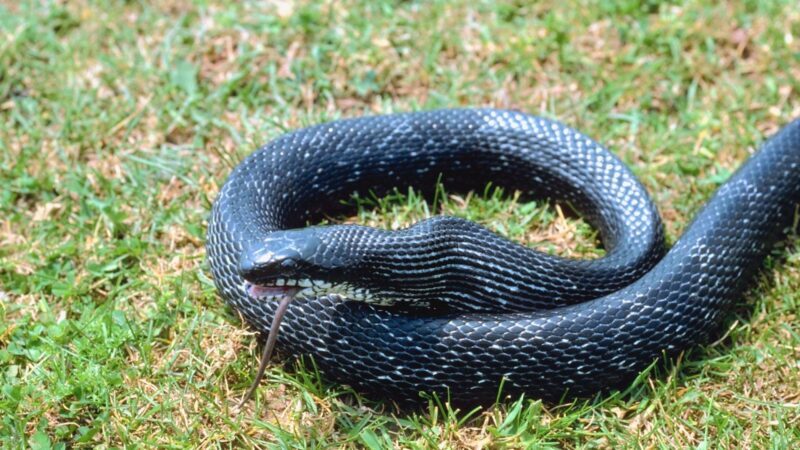
Black rat snakes are commonly seen in the eastern part of the United States. They’re good at climbing when they’re found in fields and pine forests. As mentioned, they’re not harmful to humans but helpful to farms and barns in controlling pests like rodents.
What Do Black Rat Snakes Eat?
Black rat snakes mainly eat rats and mice, but they can have small lizards and frogs as meals too.
Where Do Black Rat Snakes Hunt for Food?
They stay on grassland and field edges to hunt for food. These are the places where there’s an abundant food supply. Since they’re excellent climbers, they also hang out in a tree to wait for the birds and their eggs.
Where Do Black Rat Snakes Live?
Black rat snakes live on flat farmland or rocky hillsides of the mountains.
What Do Black Rat Snakes Do?
When exposed to danger, they may freeze or lay motionless. They would coil their bodies with their rattling tails. But there are still chances that they protect themselves and become aggressive if exposure to danger is prolonged. They emit a foul-smelling musk when they’re being touched or captured.
Should You Kill a Black Rat Snake?
You shouldn’t kill rat snakes as they’re not dangerous to humans. It’s a species that needs care and attention in Michigan as its number is dwindling. The reasons are being the victims of humans who think that they can cause harm, land development, and reduction of their habitat due to tree cutting.
Reproduction and Life Cycle of a Black Rat Snake
Black rat snakes usually begin mating in late April, and it continues until late June. Males wait for females to visit their territories and communicate through pheromones to initiate mating.
The male can either wrap itself around the female or grasp her using his mouth so she won’t get away.
The male’s hemipenes are inserted into the female’s cloaca. This process only takes a few minutes to complete. Some instances can last for a few hours. Furthermore, the female will lay eggs after five weeks of mating.
A female black rat snake can produce a dozen or twenty eggs. Some females can lay eggs twice a year.
The eggs will be placed and kept hidden under leaves and hollow logs or in an abandoned burrow. They need 65 to 70 days to hatch. The hatchlings are known as vigorous eaters, so it’s no wonder that they can double their sizes in no time.
Do Black Snakes Chase You?
Black snakes won’t chase you. These snakes are shy, and they don’t like to be confronted, so they run for cover if they can. However, they can just remain motionless with their bodies coiled and tails rattled.
Black Rat Snake’s Predator
The common predators of a black rat snake are foxes, owls, and hawks.
List of Sources
Johnson, S. A., McGarrity, M. E. (2020). Black Snakes: Identification and Ecology. University of Florida.
Pierce, R. A., II. (2014). Snakes: Information for Missouri Homeowners. University of Missouri.
Trepanowski, P. (2003). Pantherophis Obsoletus. Animal Diversity Web.
Scientific Name: Elaphe obsoleta obsolete. (2003). The Pennsylvania State University.
- Bed Bug Surge 2025: How to Detect, Prevent, and Safely Eliminate Infestations in Top U.S. Cities - June 18, 2025
- Asian Needle Ants Invade US Homes: 2025 Guide to Identification, Risks, and Effective Control - June 11, 2025
- New World Screwworm Alert: How US Livestock Owners Can Prevent Outbreaks and Protect Herds [Summer 2025 Update] - June 8, 2025
